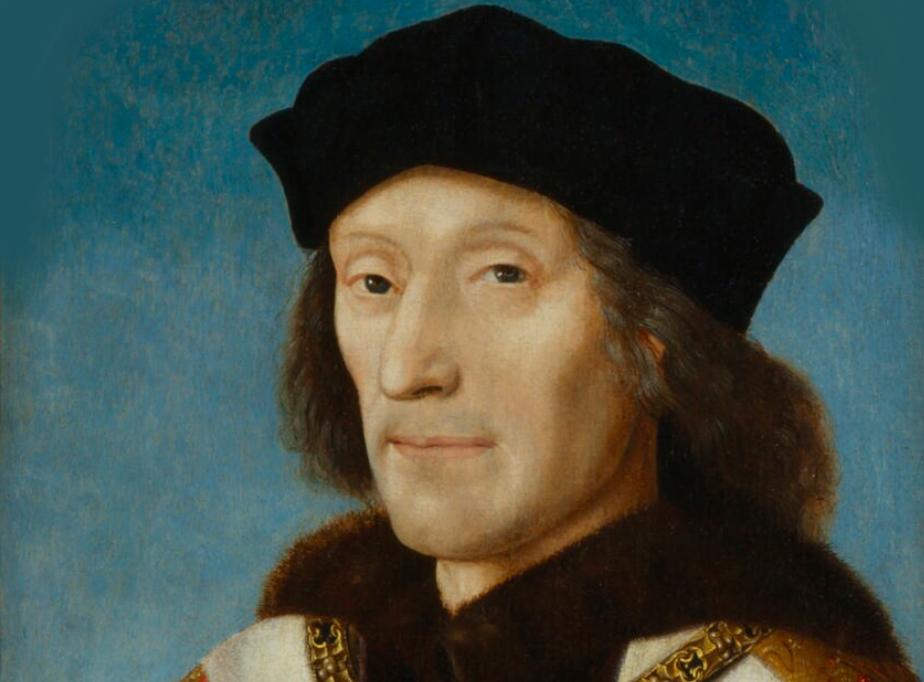Source Exercise 4: The Wars of the Roses

Credit: National Portrait Gallery [Public domain]
The background
In 1399 Henry Bolingbroke, Duke of Lancaster, launched a coup that overthrew King Richard II. Richard himself did not survive the coup and he left no heir, so, perhaps inevitably, the takeover sparked off a power struggle between Bolingbroke and other claimants to the throne, many of whose claims were stronger. Nevertheless, Bolingbroke, who had taken the title King Henry IV, was able to defeat his rivals and secure his dynasty on the throne: when he died his son succeeded him as King Henry V. Henry V also faced plots to overthrow him, though he too was able to defeat them. Henry V established himself as a popular figure by ruling very effectively within England and through great victories in France, the most famous of which was the Battle of Agincourt in 1415. The resulting peace treaty, the Treaty of Troyes of 1420, laid down that Henry should marry a French princess, Catherine de Valois, and that their son should inherit the French, as well as the English, crown.
In 1421 a son was born to the couple and christened Henry. Only nine months later, however, Henry V died and the infant became King Henry VI. A king succeeding at such a young age inevitably meant a long period of regency. In Henry VI’s case a Council of Regency was set up under the chairmanship of the king’s uncle, Duke Humphrey of Gloucester. Such a situation was bound to provoke jostling for power at court, but the situation might have been containable had the situation in France not suddenly collapsed. The French rose in rebellion against English dominance, under the inspiring leadership of Joan of Arc. The disastrous news from France kindled deep feelings of bitterness at court in England, which came to a head in 1450, when Normandy was lost. England’s proud French empire was now reduced to the area around Calais.
Without an effective king
The situation might have been different had Henry VI himself been a stronger character after the model of his father and grandfather. In fact, however, Henry was a non-entity, easily persuaded to do whatever those about told him to do. He also suffered repeated bouts of a crippling mental condition. Although the nobility attempted to cover up the king's inadequacies by presenting government as normal, they were unable to agree on critical decisions, like what to do about the threat to English possessions in France. And so, by 1450 France had been lost and Henry VI's greatest lords could no longer pretend that the king was actually ruling.
Two main groups soon emerged with different views on how the realm should be governed in the absence of an effective king. One was associated with the court and centred around the Duke of Somerset, who advocated others ruling in the king's name informally; the other, led by the Duke of York, favoured setting up an official council to rule in the king's stead. As time went on, the disputes between these groups and between individual nobles over land became worse and worse. At the same time, the queen, Margaret of Anjou, took the side of one of the parties; with her she took the king. This meant that the other party was, despite attempts to avoid this, fighting the king himself. The intense political in-fighting finally came to blows in a pitched battle at St Albans in 1455 which York won. York hoped simply to take over the running of the king’s government, but the queen and the court party did not stop their opposition and finally in 1460, taking advantage of his royal descent (he had a better dynastic claim to the throne than Henry VI, he argued), the Duke of York formally claimed the throne. York’s action immediately sparked off war between his followers, the House of York, also known as Yorkists, and the court party, led by Queen Margaret and known as the House of Lancaster or Lancastrians. The Duke of York himself was killed early in the war, when he was defeated by Queen Margaret in battle at Wakefield and executed for treason. However his claim to the throne passed to the eldest of his three sons, Edward, earl of March. After a period of manoeuvre and counter-manoeuvre, Edward heavily defeated the Lancastrians at the Battle of Towton, still the bloodiest battle ever to have been fought on English soil, and had himself crowned King Edward IV.
The arrival of the Tudors
However, once one seizure of the throne based on a better dynastic claim had been made, others followed, and in the 1480s, Richard of Gloucester similarly took the throne from Edward IV's son to become Richard III. He was then ousted by Henry Tudor in 1485, who became Henry VII, founding the Tudor dynasty. The war between the two houses of Lancaster and York became known later as the Wars of the Roses, from two heraldic badges, a white rose for the House of York and a red rose for the House of Lancaster. In fact these rose motifs were relatively little used in the fighting, and, as we have seen, events were much more complicated than the story of a power-hungry nobility suggests.
Material to help teachers and students develop interests and skills as a historian.

